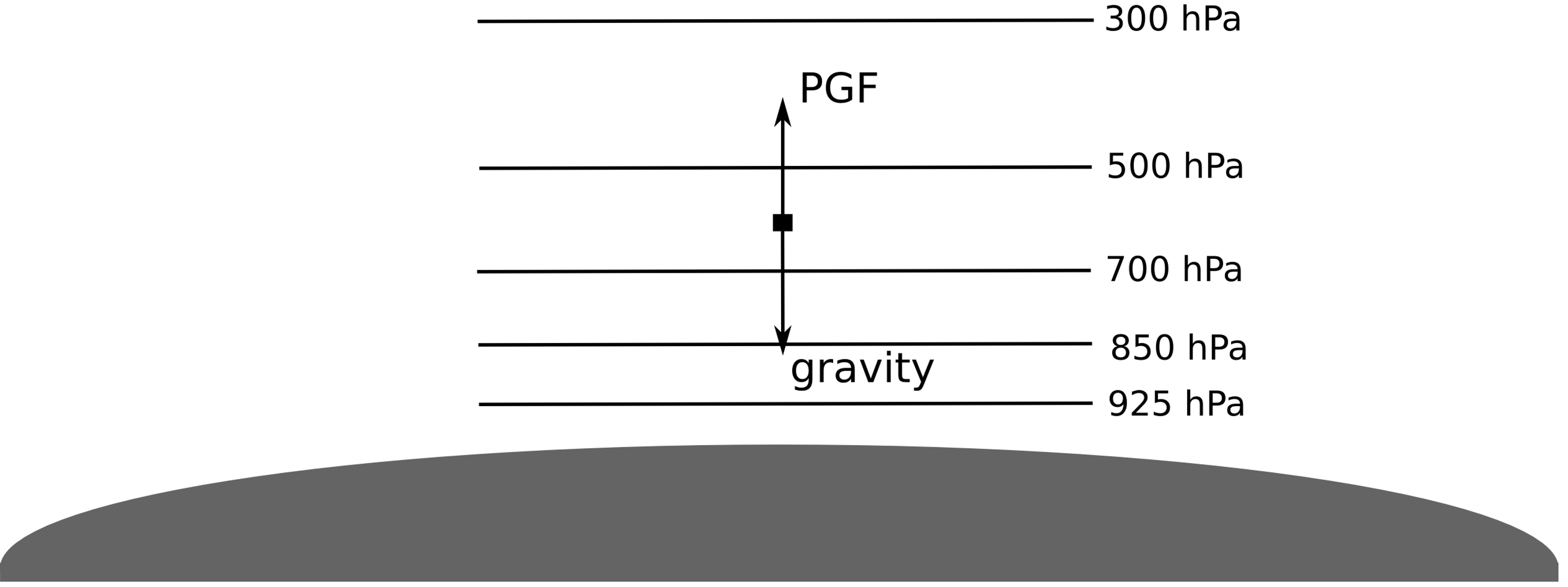13.1. Hydrostatic Balance#
We begin with the hydrostatic balance, which is a force balance between the vertical pressure gradient force and gravity. There is always a vertical pressure gradient force and it is highest at the surface and decreases exponentially with increasing altitude. This balance can be written algebraically as,
On average, the atmosphere can be approximated to be in hydrostatic balance (i.e., there is little vertical motion) as average vertical motions are on the order of centimeters per second. However, there are certain atmospheric phenomenon that ‘violate’ hydrostatic balance, resulting in considerable vertical motion (\(>1\) \(m\) \(s^{-1}\)).
What atmospheric phenomenon (that you can see) violates hydrostatic
balance?
Hydrostatic balance can also be visualized with a force balance diagram (Fig. 13.1) that depicts the different forces and how they are acting on an air parcel in the vertical dimension.

Fig. 13.1 A force balance diagram illustrating the forces in hydrostatic balance.#
